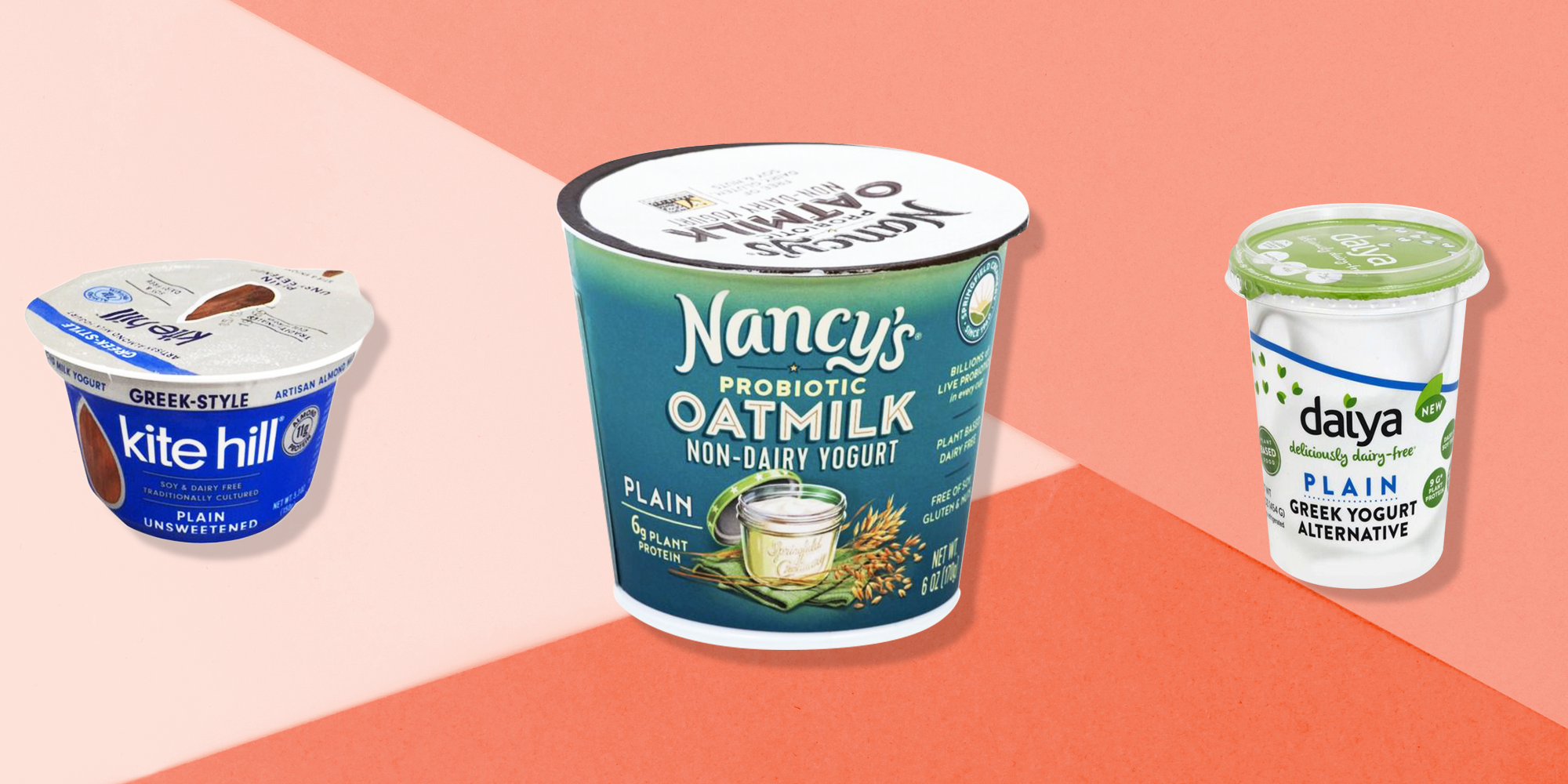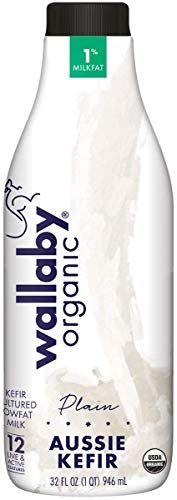Home » Diet & Food »
Kefir Might Live In The Dairy Aisle But It Doesn't Always Contain Milk
Walking through the dairy aisle used to be simple. You just grabbed your carton of fruit-at-the-bottom yogurt and low-fat milk and you went on your merry way.
These days, though, the refrigerator cases are filled with all sorts of interesting options, from plant-based yogurt to kefir. Not quite yogurt and not quite milk, fermented, probiotic-packed kefir has pretty much all of today’s hottest health buzzwords going for it.
If you’ve seen kefir in the grocery store and wondered WTF it was all about, you’re not alone. But don’t let kefir’s identity crisis stop you from trying it out: Nutritionists say it can pack a serious punch in the nutrition department.
In fact, kefir is “a great source of probiotics, which may help improve one’s digestive health,” says Keri Gans, RD, dietitian and author of The Small Change Diet. Plus, certain types of kefir can also be great source of calcium, a must-have for healthy bones, too.
If you have yet to give kefir a try (and need a break from your standard milk and yogurt), here’s everything you need to know about the trending probiotic drink, plus why it’s worth adding to your diet.
Hold on. What is kefir, exactly?
Long story short, “kefir is a fermented milk product similar to yogurt, but with a thin (rather than thick) texture,” explains nutritionist Andy de Santis, RD. “It contains a similar amount of protein as yogurt, but offers more probiotic cultures.”
Thanks to its drinkable consistency, Emily Kean, RDN, a nutritionist at Lifeway Foods (a brand that makes kefir) calls kefir “the queen of probiotic drinks.”

While your standard kefir is made from cow’s milk, it can be made from any type of milk or milk alternative—including plant-based milks, according to Gans. If you see “coconut kefir” on a product label, for example, that means it’s made with coconut milk.
Another version, “water kefir,” meanwhile, is usually made with coconut water or fruit juice, Gans adds.
So, kefir isn’t the same as yogurt?
Though people tend to call kefir “drinkable yogurt,” that’s only kind of—not totally—accurate. “What sets kefir apart is its fermentation process, which is slightly different,” says Jessica Cording, RD, author of The Little Book of Game-Changers: 50 Healthy Habits For Managing Stress & Anxiety.
“Typically, yogurt uses just bacteria for fermentation, while kefir uses both bacteria and yeast,” Gans explains. “The bacteria and yeast create cultures referred to as grains (no, they don’t contain gluten), which contain up to three times more probiotics than yogurt.” Impressive, right?
Is kefir healthy, then?
As you can probably guess from its solid probiotic punch, kefir is totally healthy. Here’s what you can expect from one cup of plain, low-fat kefir (made from cow’s milk), according to the USDA:
- Calories: 102
- Total fat: 2 g
- Saturated fat: 0.66 g
- Carbohydrates: 11 g
- Fiber: 0 g
- Sugar: 11 g
- Protein: 9.5 g
Opt for a cow’s milk-based kefir and you’ll get lots of calcium and vitamin D (30 and 25 percent of your daily needs, respectively).
Plus, a bonus for anyone trying to get pregnant: Cow’s milk kefir is high in folate, which aids in warding off neural tube defects, too.
Of course, just keep in mind that a coconut milk- or water-based kefir won’t boast the same nutrition stats as a kefir made from dairy.
Kefir’s health benefits are pretty legit.
Fermented foods like kefir command the spotlight because of their probiotics’ ability to help balance gut flora and regulate digestion.
Kefir won’t just help you become more regular, though. “Because of its probiotics, those suffering from irritable bowel disease or digestive distress from a course of antibiotics may experience relief after incorporating kefir,” says Santis.

Thanks to kefir’s vitamin D, calcium, and folate content, it’s also good for your bones and your ability to have a healthy pregnancy, Cording adds.
Luckily, if you’re like the 25 percent of the American population with a reduced ability to digest lactose, take comfort in the fact that fermented dairy products like kefir might be easier to tolerate.
Does kefir have any downsides?
Like other dairy products, full-fat kefir does contain higher amounts of saturated fat, which the American Heart Association, recommends limiting to 16 grams (or 140 calories) per day in the average 2,000-calorie diet. (Though the topic is up for debate these days, experts have linked excess saturated fat consumption to heart disease.)
And, while Kean recommends kefir for pretty much everyone, those with certain health conditions (likeimmune deficiencies) should avoid probiotics unless under a doctor’s supervision.
Finally, as with anything you eat, just pay attention to serving sizes. “A lot of times a bottle of kefir contains four servings, not one,” she says.
How to find yourself a quality kefir.
When hunting for a high-quality kefir to put in your cart, Kean recommends focusing on the following factors:
- Protein (the more, the better)
- Added sugar (though dairy products contain some natural sugars, avoid the added stuff as much as possible)
- Artificial ingredients (again, avoid!)
- Live active cultures (look for a product with at least one billion CFUs of probiotics per serving, preferably from a variety of strains)
Kefir Products Dietitians Love
 Lactose-Free, Low-Fat Plain KefirGreen Valley Creameryamazon.comSHOP NOW
Lactose-Free, Low-Fat Plain KefirGreen Valley Creameryamazon.comSHOP NOW
“I love that this option is lactose-free, making it more agreeable for some consumers,” Gans says. It’s also low in saturated fat.
 1% Milkfat Plain Aussie KefirWallaby Organicamazon.comSHOP NOW
1% Milkfat Plain Aussie KefirWallaby Organicamazon.comSHOP NOW
If you want an organic kefir, Gans likes this one. “It has no added sugars, eight grams of protein, and provides 25 percent of the RDA for calcium,” she says.
 Greek-Style Plain Whole Milk KefirLifewayamazon.comSHOP NOW
Greek-Style Plain Whole Milk KefirLifewayamazon.comSHOP NOW
Another solid option, Cording buys this creamy, Greek-style kefir from Lifeway all the time.
How to load up on kefir.
Once you’ve got yourself a quality bottle of kefir, you can incorporate it into your eats in so many ways. De Santis recommends:
- Drinking kefir as a post-workout shake
- Adding kefir to your smoothies in place of your usual liquid or yogurt
- Pouring it into whole-grain cereal or oatmeal (and sprinkling on some nuts) for a nutritionally-balanced breakfast
Kean also swears by kefir in place of buttermilk or sour cream in all sorts of recipes. She also likes using it to add creaminess to dressings, dips, and soups.
The bottom line: The nutritional makeup of kefir depends on whether it’s made from dairy or a plant-based alternative. Either way, the smooth, fermented beverage is a great source of probiotics.
Source: Read Full Article



